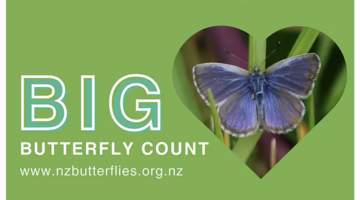

Emma Sommerville had just arrived in the Bay of Plenty from Christchurch, after experiencing the Canterbury earthquake disaster, when the Rena ran aground. Having just completed her master’s ...
READ MORE

New Zealand is world famous for its unique birdlife. In our resources on conserving our native birds, we look at the issues surrounding the conservation of some of our threatened bird species ...
READ MORE

Position: Senior Researcher (Wildlife Ecologist), Manaaki Whenua – Landcare Research. Field: Small mammal and bird ecology, threatened species recovery, pest management. John began his career in ...
READ MORE

In this activity, students consider the effects of the release of the rabbit haemorrhagic disease virus as a biological control in Otago. By the end of this activity, students should be able to ...
READ MORE

Aotearoa New Zealand has one of the highest cat ownership rates in the world. Nearly 40% of households have at least one cat – for the most part, we’re fond of our cats. Unfortunately, domestic ...
READ MORE

Aotearoa New Zealand has a lot of cats! Forest & Bird reports we have: 1,134,000 companion cats 196,000 stray cats millions of feral cats – there’s no data on feral cat abundance but this is ...
READ MORE

This New Zealand-based citizen science project collects data about butterflies in our gardens, schools, parks and farms – any location in the country or on the outer islands. This annual event – ...
READ MORE

FrogID is an Australian app that uses audio of frogs’ unique calls to identify various species and their locations. We can use it in Aotearoa New Zealand to record the location of introduced ...
READ MORE

Be part of a worldwide movement and use Global Earth Challenge to submit or classify photos to help our planet’s environment and human health. Global Earth Challenge is a citizen science campaign ...
READ MORE

This class case study provides an example of introducing ethical thinking into the classroom to explore a controversial issue in science. It shows how the ethical frameworks in the Ethics ...
READ MORE

New Zealand is well known for its unique bird life. Our endemic birds evolved in an isolated, island environment. The arrival of people, the deliberate and accidental introduction of mammalian ...
READ MORE

In this online PD session recorded on 15 October 2015, primary school teacher Kim MacPherson talks about the Science Learning Hub’s resources – Conserving native birds – and how she used a ...
READ MORE
Kiwi – Aotearoa New Zealand’s national icon – are under threat from introduced pests. In this episode of Project Mātauranga, Dr John McLennan and members of the Lake Waikaremoana Hapū Restoration ...
READ MORE
Immediately following the grounding of the Rena on the Astrolabe Reef, the Bay of Plenty Polytechnic and the University of Waikato formed a marine response team. This team surveyed local marine ...
READ MORE
Many New Zealand birds have declined in numbers, so Dave Kelly and Jenny Ladley of University of Canterbury study the effect this has on native bird-pollinated plants. Dave explains the need to ...
READ MORE

We can use our senses to identify birds – there are lots of clues. Please check the speaker notes that accompany the slides. They contain activity instructions, prompting questions and teaching ...
READ MORE

Ka taea e tātou te whakamahi i ō tātou rongo ki te tautohu manu – e hia nei ngā tīwhiri. Me maumahara ki te tirotiro i ngā taipitopito kei te taha o ngā kiriata. Kei roto ko ngā tohu ngohe, ko ...
READ MORE

Kimihia mai i ngā kōrero mō ngā kaupapa atawhai he aha hoki ngā mahi e taea kia tū ai hei kaitiaki. Me maumahara ki te tirotiro i ngā taipitopito kei te taha o ngā kiriata. Kei roto ko ngā tohu ...
READ MORE